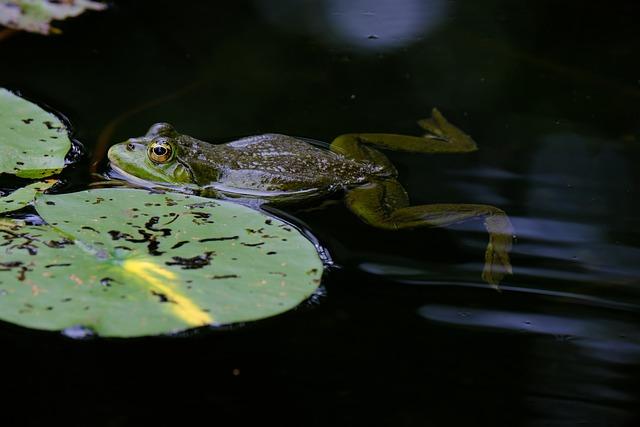- Introduction
- Habitat and Distribution of Atlantic Forest Tree Frog
- Features and Characteristics
- Breeding and Behavioral Patterns
- Conservation Efforts and Status
- Conclusion
- FAQs
- References
Introduction
The Atlantic Forest Tree Frog (Hypsiboas semilineatus) is a fascinating amphibian found primarily in the Atlantic Forest biome, one of the most biodiverse hotspots in Brazil. This species stands out for its unique characteristics that help it thrive in this rich yet shrinking ecosystem.
In this article, we'll explore its habitat and distribution, examine key physical and behavioral characteristics, discuss breeding patterns, and provide insight into ongoing conservation efforts. Whether you're a biologist or simply a nature enthusiast, this thorough exploration of the Atlantic Forest Tree Frog will leave you amazed by these often-overlooked amphibians.
Habitat and Distribution of Atlantic Forest Tree Frog
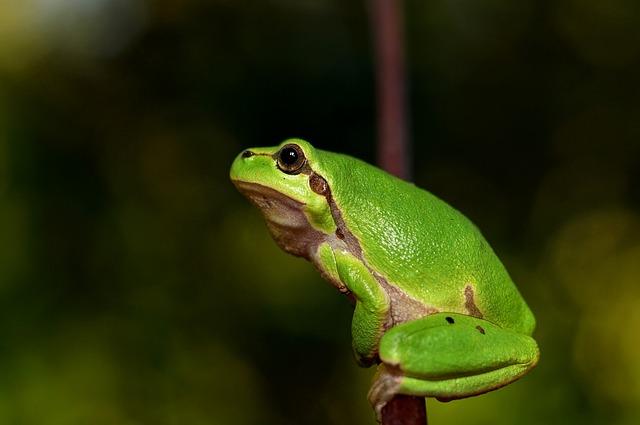
(Image: Pixabay/@BubbleJuice)
The Atlantic Forest Tree Frog mainly resides within the Atlantic Forest biome, which extends along Brazil's eastern coast, with small stretches into Paraguay and Argentina. This region is known for its tropical and subtropical moist forests. The tree frog can be found in various sub-habitats within this forest, including lowland rainforests, montane regions, and even areas of human disturbance like agricultural lands.
What sets this species apart is its adaptability to different elevations, from the coastal plains to mountainous regions at varying altitudes. While they prefer moist environments, some have been noted to survive in fragmented patches of the forest, proving their resilience in adapting to changing environmental conditions.
Unfortunately, habitat loss due to deforestation and urbanization has significantly reduced the range of the Atlantic Forest Tree Frog. As we delve deeper into this article, we'll learn why their habitat is crucial for their survival.
Features and Characteristics
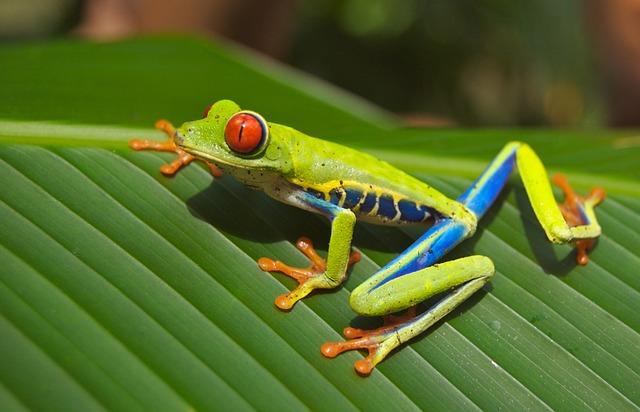
(Image: Pixabay/@12019)
The Atlantic Forest Tree Frog is recognized by its distinct physical features. Most notably, its semi-translucent body enables it to camouflage effectively in its environment, a useful adaptation to avoid predators. Their skin varies in color, ranging from brown to bright green, often with a lateral stripe down their body—a detail that aids in species identification.
Another noticeable feature is their large eyes, which provide excellent night vision, essential for their nighttime hunting. These frogs are arboreal, meaning they dwell primarily in trees, using their specialized foot pads to cling to branches and leaves. Their strong limbs also make them skilled jumpers, an ability that helps them navigate the dense Atlantic Forest vegetation.
Size-wise, these frogs tend to be small to medium, usually growing up to 4-5 cm (approximately 1.5-2 inches). Though diminutive, their vocalizations are disproportionately loud, particularly during mating season when males call out to potential mates from elevated perches in the forest canopy.
Breeding and Behavioral Patterns
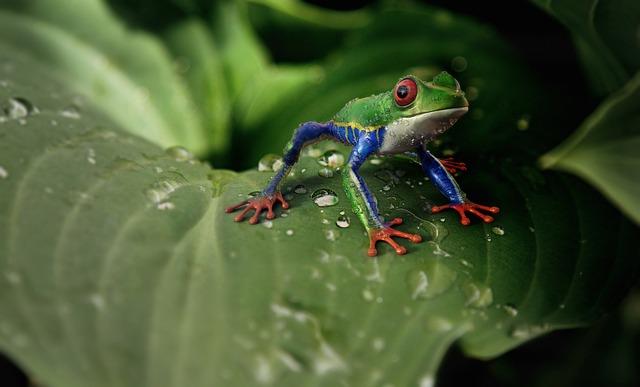
(Image: Pixabay/@cocoparisienne)
Atlantic Forest Tree Frogs typically breed during the wet season, which spans from October to March. The rainy conditions allow them to reproduce in temporary ponds and water-filled tree branches, where they lay their eggs away from predators on the forest floor. During this season, males use their loud vocal calls to attract females, with each species having its distinct sound—almost like an amphibian fingerprint.
Once a mate is attracted, amplectant pairs (when the male clasps the female as part of the reproductive process) proceed to deposit fertilized eggs in a water source. Interestingly, their tadpoles are fully aquatic, developing in natural pools or streams before metamorphosing into adults capable of climbing and living out of water.
In addition to their reproductive habits, the frogs exhibit other noteworthy behaviors, such as nocturnal feeding. They prey on small insects, spiders, and other invertebrates, contributing to the forest's ecological balance.
Conservation Efforts and Status
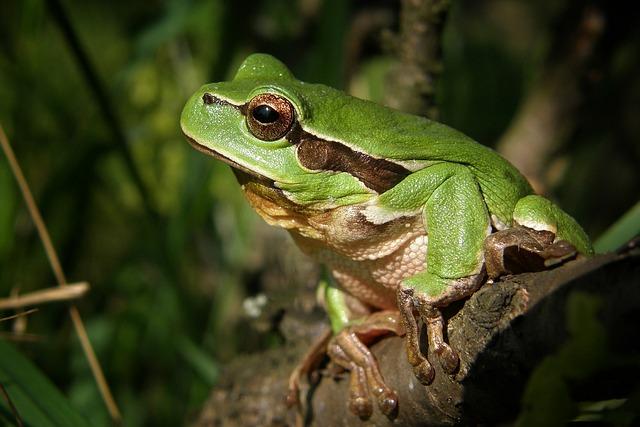
(Image: Pixabay/@saguari)
The Atlantic Forest Tree Frog faces numerous threats, largely due to habitat destruction in the Atlantic Forest biome. Urban expansion and illegal logging have reduced their habitat to mere fragments over the years. Additionally, climate change, pollution, and the introduction of diseases like chytridiomycosis have further endangered this species.
However, there are several ongoing conservation efforts aimed at preserving the species and its habitat. Local conservation groups, along with international organizations like IUCN (International Union for Conservation of Nature), have marked frogs as an indicator species for forest health. Protecting these frogs indirectly helps conserve the larger Atlantic Forest ecosystem.
Some successful initiatives include forest fragmentation mitigation, captive breeding programs, and protected land reserves within the Atlantic Forest. Continued research on this species is vital for ensuring its long-term survival; thus, supporting conservation action remains critical.
Conclusion
The Atlantic Forest Tree Frog is more than just a curious amphibian; it one of the many keystone species that reflect the overall health of the Atlantic Forest ecosystem. By learning about their biology, reproductive behavior, and the challenges they face, we become better equipped to support the preservation of not only their species but the broader biodiversity they contribute to. However, without continued conservation efforts, their future, along with that of their habitat, remains uncertain.
Preserving the Atlantic Forest Tree Frog goes hand in hand with global biodiversity and environmental protection goals—actions now will have a lasting impact on these amazing creatures and their homes.
FAQs
What do Atlantic Forest Tree Frogs eat?
Atlantic Forest Tree Frogs primarily eat small insects such as ants, beetles, and spiders. These frogs are opportunistic hunters and play an important role in keeping insect populations under control.
Are Atlantic Forest Tree Frogs endangered?
While not all Atlantic Forest Tree Frogs are classified as endangered, many populations are under threat due to significant habitat loss from deforestation, urban encroachment, and pollution in the Atlantic Forest region.
How long do Atlantic Forest Tree Frogs live?
In the wild, Atlantic Forest Tree Frogs generally live around 3 to 5 years. However, this lifespan can be shorter depending on environmental pressures such as predation and habitat destruction.
Where are Atlantic Forest Tree Frogs primarily found?
They live in the Atlantic Forest biome, which spans across Southeastern Brazil and parts of Paraguay and Argentina, particularly in tropical and subtropical moist forests.

